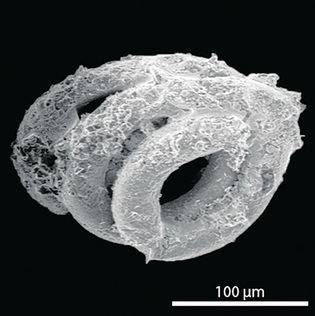 loading
loading
FindingsLooking for our forebearsA window into animal evolution?  Yale UniversityView full imageUp to a point, Earth is rather generous with its fossils. But reach back more than 500 million years, and “the record becomes much more limited and rare,” says Ross Anderson ’17PhD. This makes it difficult to do empirical research into questions like when and how animal life emerged. But Anderson, a paleontologist, has made a discovery that could shed light on parts of this evolutionary darkness. In 2016, while sitting in the basement of Yale’s geology building examining rocks from northern Mongolia, Anderson found a cluster of what look like multicellular fossils of early embryonic animal life. They date back 541 million years. (One is pictured at right.) Only one other site, China’s Doushantuo Formation, has similar fossils preserved with such fidelity. They are about 600 million years old. The discovery holds out two possibilities. First, it may settle the 20-plus-year-old debate over the Doushantuo fossils; skeptics assert that the embryo-like forms are merely one-celled algae or bacteria. If his fossils are what they seem, Anderson says, scientists will “have a new window” into the evolution of animal life. (His finding appeared in Geology and the Journal of Systematic Palaeontology.) Second, there is a broad class of microfossils that was assumed to have died out 560 million years ago. This extinction event is used as a “bio-stratigraphic” time stamp to determine the age of many rocks. Anderson found some of these same fossils in his sample. Since these life forms were alive 20 million years after their kind supposedly died off, geologists may need to revisit some of their dating assumptions. Almost all Anderson’s finds so far came from just two rock samples. But a trip to the site in 2017 netted more than 300 rocks. The hard work of analysis is now under way.
The comment period has expired.
|
|